1. Aunt Jemima (Now Pearl Milling Company)
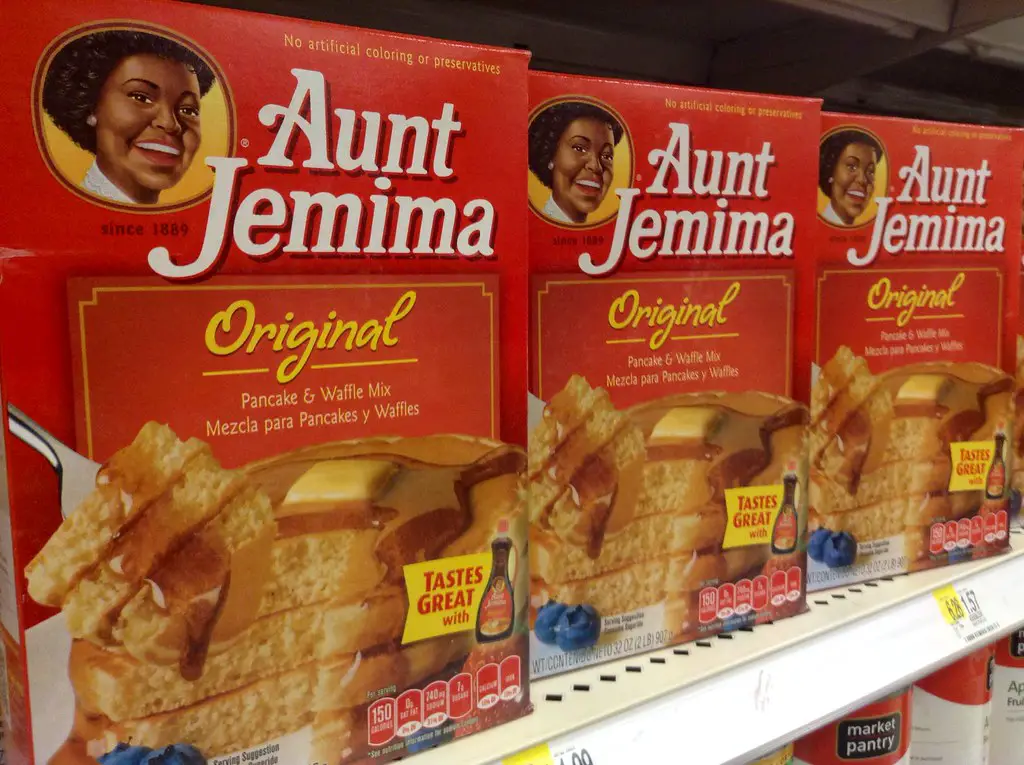
Aunt Jemima, now rebranded as Pearl Milling Company, has faced significant challenges in maintaining consumer trust and brand loyalty. The rebranding came after growing awareness of racial stereotypes in branding, leading to a complete overhaul of its image and packaging. However, the new name has struggled to gain traction, with many long-time customers feeling disconnected from the product. Competitors like Kodiak Cakes and Krusteaz have gained market share by offering healthier pancake mixes with higher protein and whole grains, further pushing Pearl Milling Company to the sidelines.
By 2025, Pearl Milling Company could vanish from grocery store shelves entirely due to declining sales and lack of brand recognition. The breakfast food market is shifting toward healthier, protein-rich, and organic options, leaving traditional brands struggling to compete. Unless Pearl Milling Company undergoes another major transformation, it may be overtaken by newer, trendier brands. Private-label store brands also continue to undercut it on price, making it harder to justify its place on the shelves. Without a strong consumer base, this once-iconic brand may fade into history.
2. Tabasco
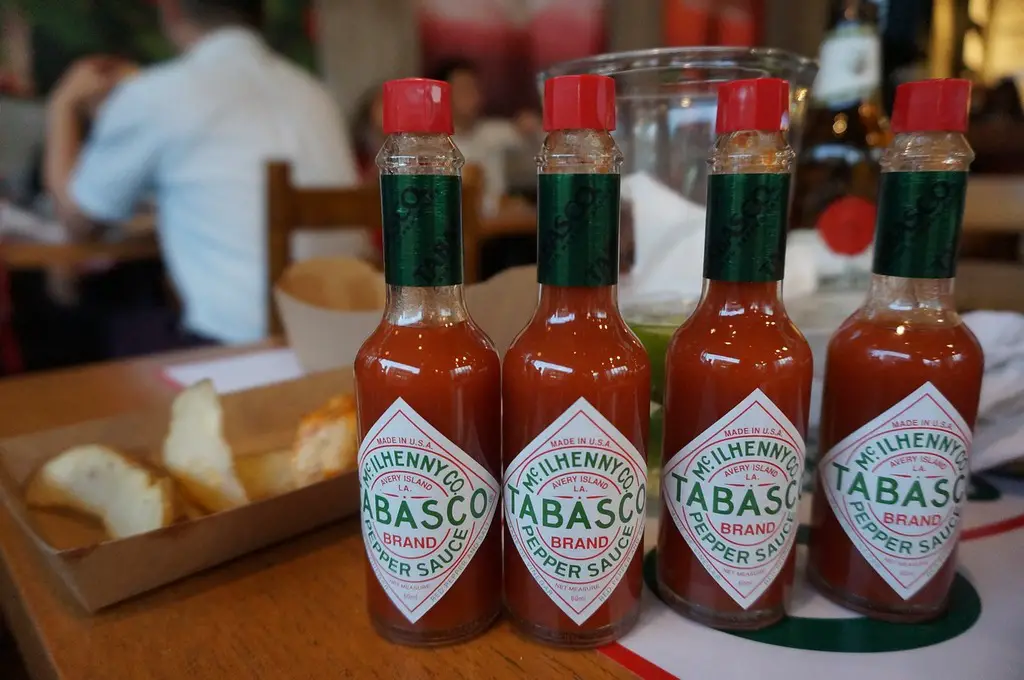
Tabasco has long been a go-to hot sauce for spice lovers, but changing preferences in the condiment industry have put its future at risk. The market for hot sauce has exploded with competition from artisanal, small-batch, and international brands that offer unique flavors and heat profiles. While Tabasco remains a classic, many consumers are gravitating toward sriracha, ghost pepper sauces, or smoky chipotle blends that provide more complexity. Additionally, younger consumers prefer brands with modern branding and environmentally friendly packaging, areas where Tabasco has been slow to adapt.
By 2025, Tabasco could struggle to maintain its dominance in grocery stores, as newer brands take up more shelf space. The rise of direct-to-consumer and subscription-based hot sauces also threatens its grocery store presence. If Tabasco does not evolve with the times—offering more flavor varieties, modernized marketing, and sustainable packaging—it may become a niche product rather than a grocery store staple. While it will likely continue to exist in some form, its presence on mainstream shelves could shrink significantly. Consumers today seek novelty and personalization, which might leave Tabasco in the dust.
3. Campbell’s Soup
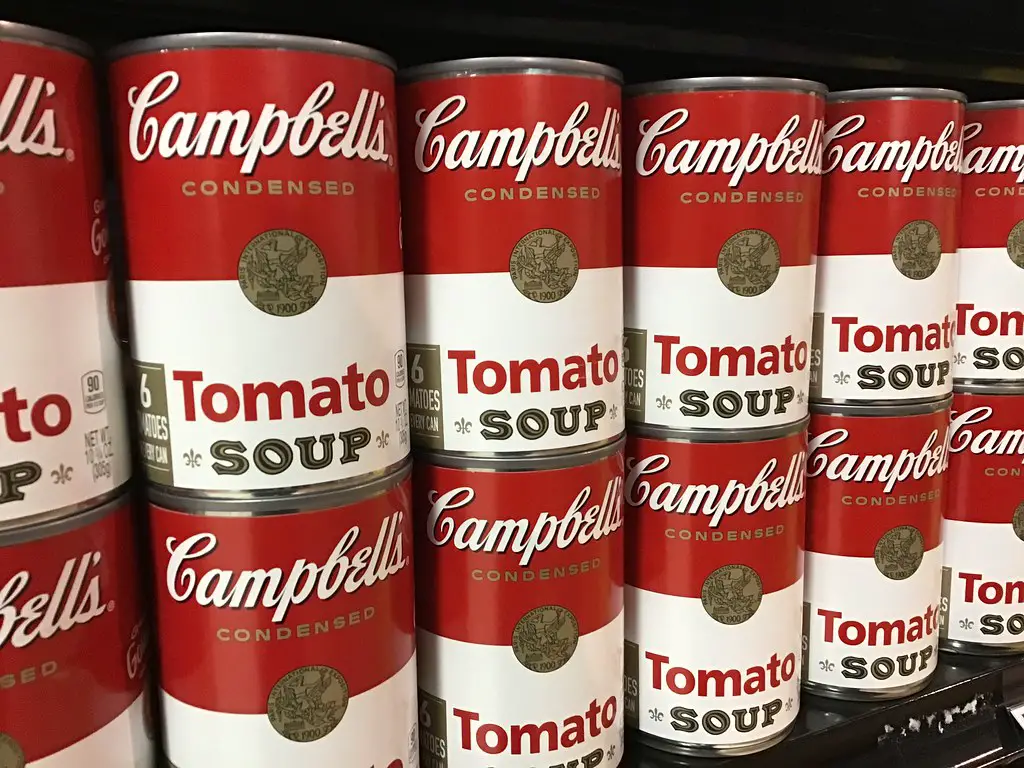
Campbell’s Soup has been a staple in American households for generations, but the canned soup industry is on the decline. Health-conscious consumers are moving away from highly processed foods in favor of fresh and organic options. Many younger shoppers prefer homemade soups, meal kits, or frozen alternatives that have fewer preservatives. Despite efforts to introduce lower-sodium and healthier varieties, Campbell’s has struggled to shake its reputation as an outdated, processed food brand. As the demand for fresh and farm-to-table meals grows, traditional canned soup sales have suffered.
By 2025, Campbell’s could find itself pushed out of mainstream grocery stores due to declining consumer interest. Many grocery chains are prioritizing shelf space for organic, gluten-free, and fresh-prepared food items. If Campbell’s does not undergo a radical transformation, it may be relegated to online sales or discount stores. The company must find a way to appeal to modern consumers with healthier ingredients and innovative packaging. Otherwise, its signature red-and-white cans could become a relic of the past.
4. Hungry-Man
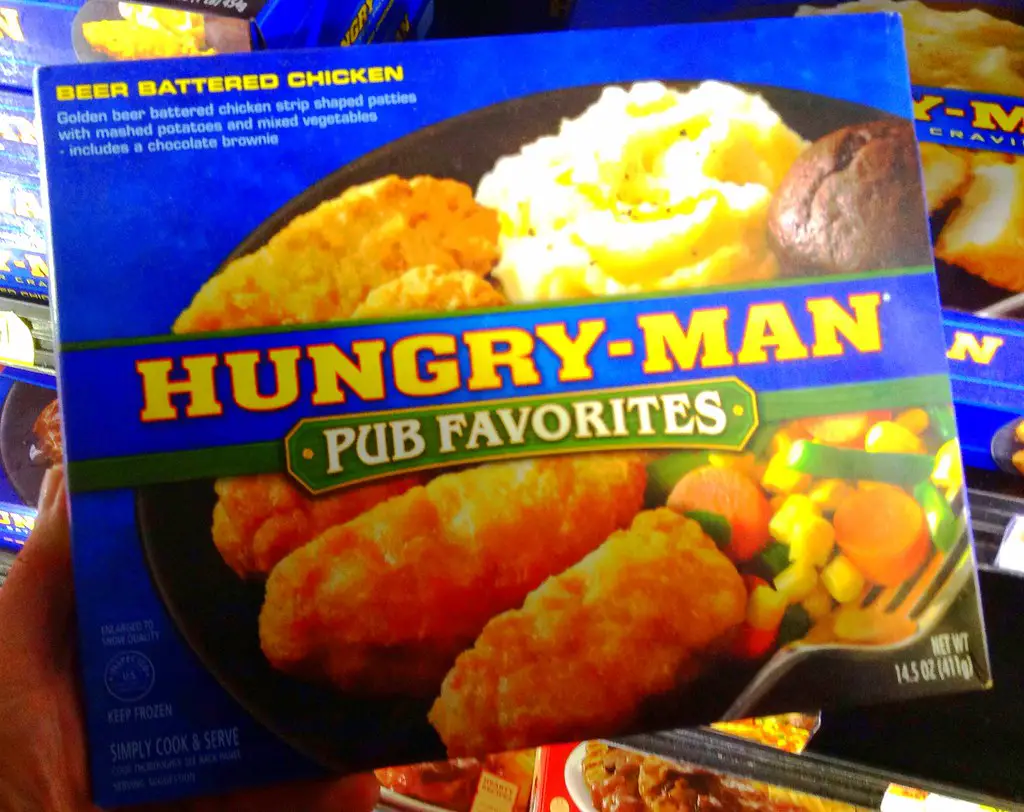
Hungry-Man frozen dinners once dominated the frozen food aisle, catering to those seeking hearty, microwaveable meals. However, today’s consumers are looking for fresher, healthier, and more diverse meal options. With the rise of meal prep services, plant-based frozen meals, and high-protein alternatives, the demand for Hungry-Man’s traditional offerings has declined. The brand’s focus on oversized portions and processed ingredients no longer aligns with the wellness trends dominating the food industry.
By 2025, Hungry-Man may disappear from grocery store freezers as healthier brands continue to capture market share. Competitors like Amy’s Kitchen and Evol have capitalized on the trend toward organic and minimally processed frozen meals, leaving Hungry-Man behind. Unless the brand drastically reformulates its offerings, it may lose its place in modern supermarkets. Shoppers today prioritize quality over quantity, and Hungry-Man’s approach may no longer fit into the evolving grocery landscape.
5. Jell-O
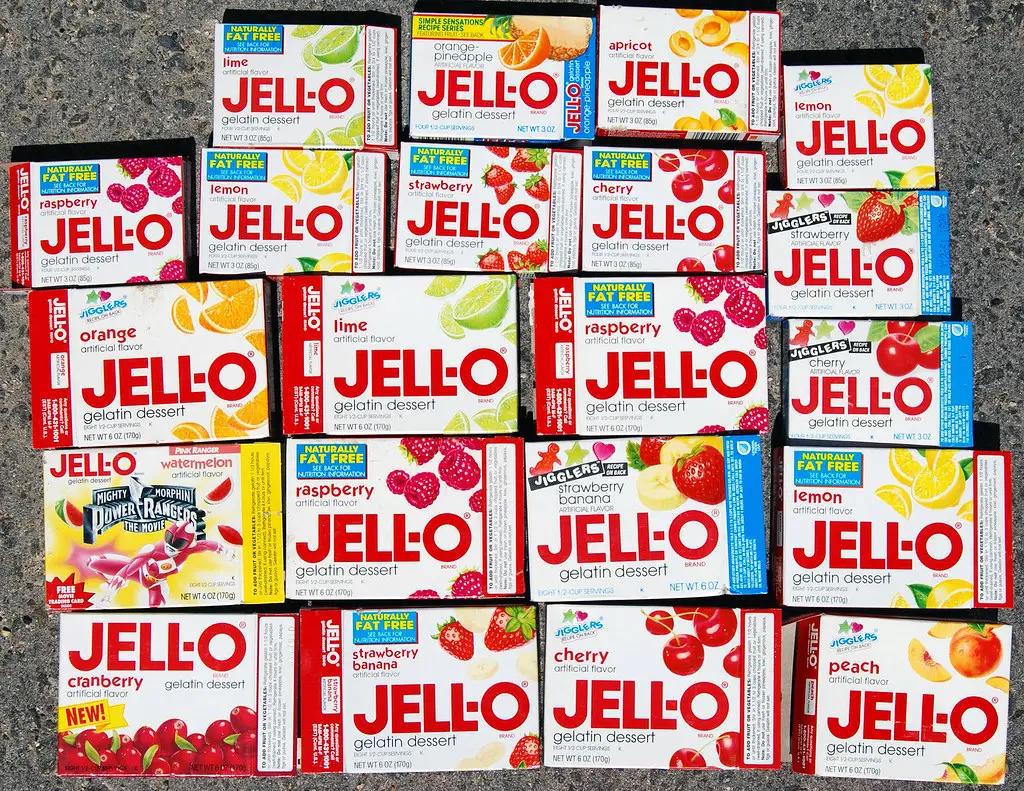
Jell-O was once a staple dessert in American households, but changing dietary preferences have led to a steady decline in its popularity. As consumers move toward natural, whole-food desserts, artificially flavored and brightly colored gelatin has fallen out of favor. The rise of dairy-free, protein-rich, and lower-sugar desserts has pushed Jell-O further into obscurity. Many parents today are avoiding artificial dyes and sweeteners, making Jell-O less appealing for families with young children.
By 2025, Jell-O could be phased out of grocery stores as sales continue to slump. Even attempts to market sugar-free versions have failed to reignite consumer interest. The brand faces competition from yogurt-based desserts, protein puddings, and fruit-based alternatives. Without a major reinvention, Jell-O may soon become a nostalgic memory rather than a grocery store staple. Its vibrant colors and wobbly texture might not be enough to keep it on shelves in the modern health-conscious market.
6. Chef Boyardee
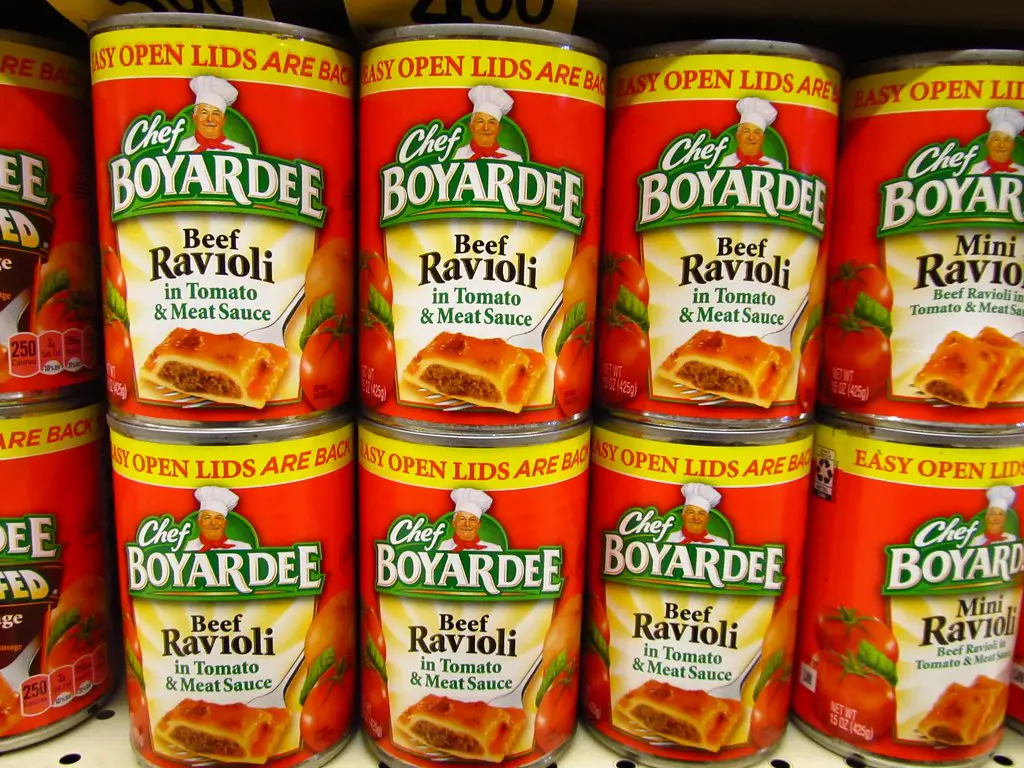
Chef Boyardee, once a childhood favorite, has seen a dramatic decline in popularity as consumers shift away from canned pasta. The demand for fresher, healthier meal options has led many shoppers to opt for refrigerated or homemade pasta dishes instead. The brand’s high sodium content, preservatives, and artificial ingredients have made it less appealing to modern consumers. Additionally, private-label store brands offer similar products at lower prices, making it harder for Chef Boyardee to compete.
By 2025, Chef Boyardee could disappear from grocery store shelves as sales continue to decline. Parents today are more conscious of their children’s nutrition and are choosing healthier meal alternatives. Unless the brand reinvents itself with healthier ingredients and a modern image, it may struggle to stay relevant. The nostalgia factor may not be enough to keep it on shelves in an era where clean eating is a priority. Without a major overhaul, Chef Boyardee may soon be a thing of the past.
7. Bumble Bee Tuna
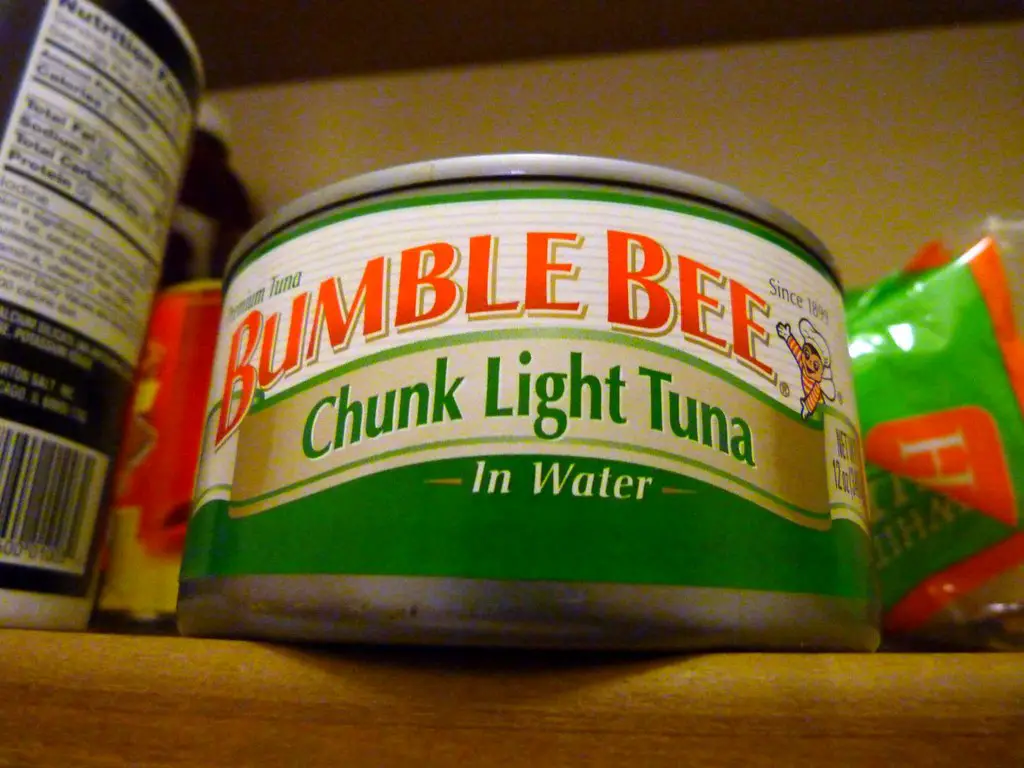
Bumble Bee Tuna has long been a go-to choice for quick, protein-packed meals, but its future in grocery stores is looking uncertain. The canned seafood industry has faced increasing scrutiny over sustainability issues, mercury concerns, and shifting consumer habits. Many shoppers are turning away from traditional canned tuna in favor of fresher options, such as refrigerated or frozen seafood. Additionally, plant-based alternatives like Good Catch are gaining popularity, offering a sustainable and mercury-free alternative to traditional tuna.
The company has also struggled with financial troubles in recent years, including a major bankruptcy filing in 2019. Although it was acquired by FCF Co., a Taiwanese seafood company, Bumble Bee has been fighting to regain consumer trust and market share. With competition from private-label brands and a growing preference for fresh or plant-based seafood, Bumble Bee may have difficulty maintaining its presence in grocery stores. By 2025, it could be phased out in favor of brands that align better with modern consumer demands.
8. Marie Callender’s
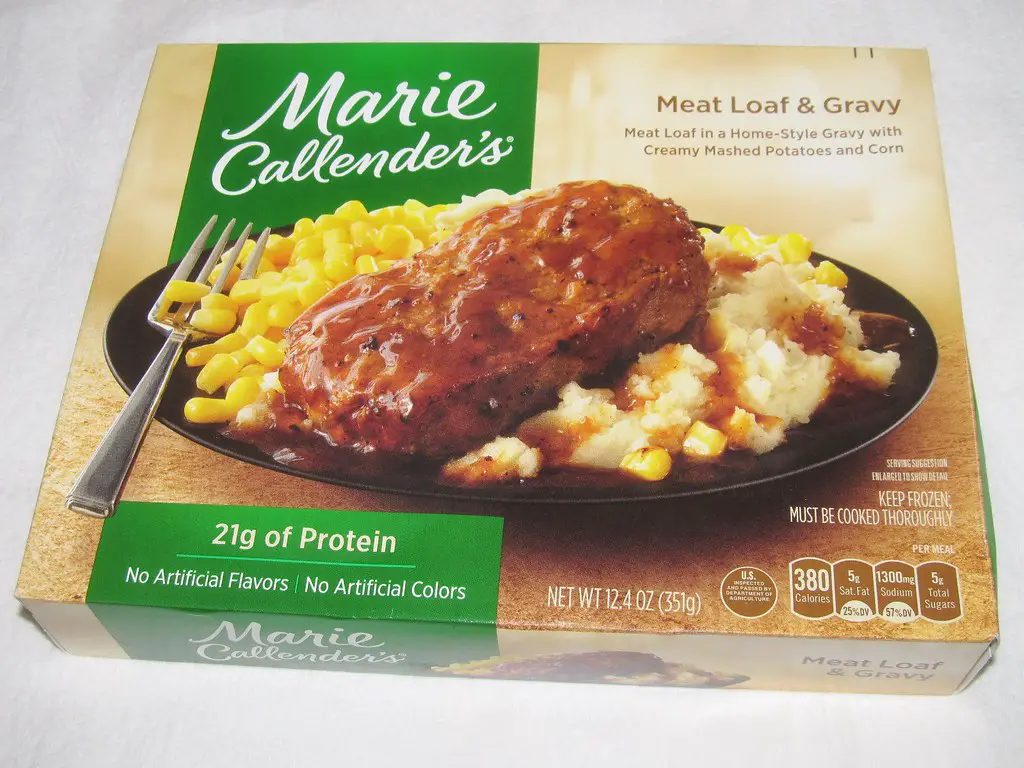
Marie Callender’s has long been a staple in the frozen meal aisle, known for its homestyle comfort foods like pot pies, pasta bakes, and classic dinners. However, the brand is facing stiff competition from healthier frozen meal options that prioritize organic ingredients, lower sodium, and better nutritional profiles. Consumers are moving away from traditional frozen comfort food in favor of fresh, homemade, or restaurant-quality alternatives. The demand for plant-based and gluten-free meals is also growing, leaving Marie Callender’s at a disadvantage.
Additionally, the frozen meal industry is shifting toward more premium, chef-inspired brands such as Amy’s Kitchen, Evol, and Primal Kitchen, which cater to health-conscious buyers. Many grocery stores are reducing shelf space for legacy brands that rely heavily on preservatives and artificial ingredients. If Marie Callender’s does not modernize its offerings, it may struggle to remain relevant in a rapidly changing market. By 2025, it could disappear from grocery store freezers as demand for healthier and fresher meals continues to grow.
9. Swiss Miss
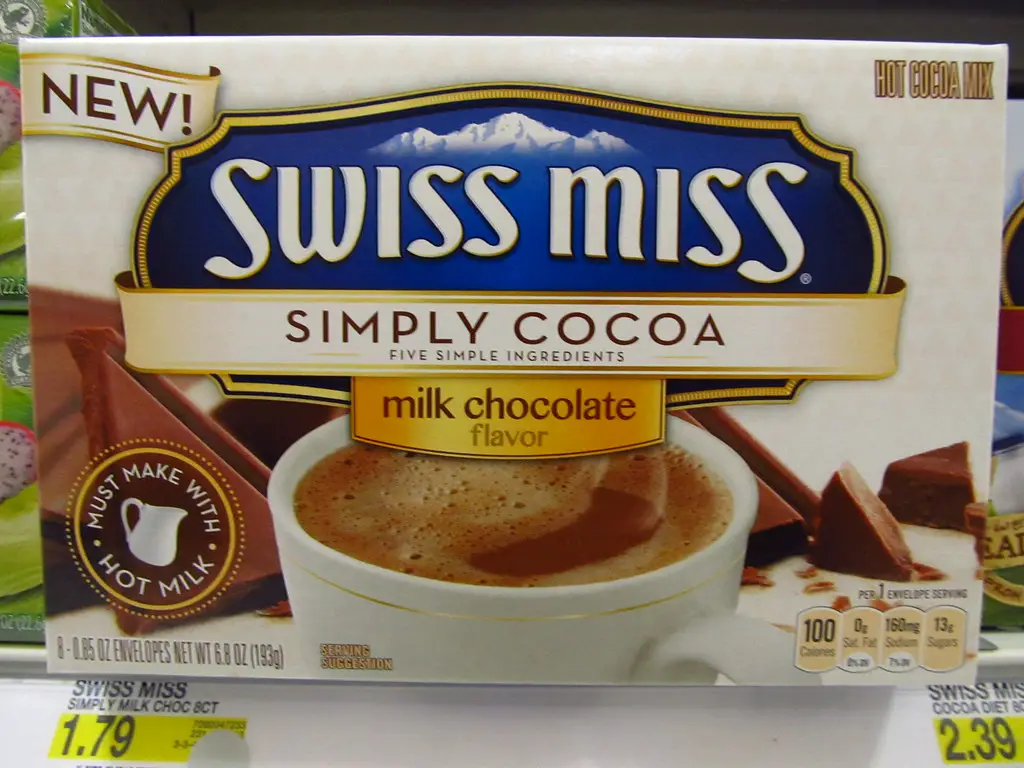
Swiss Miss has been a beloved hot cocoa brand for decades, but its sugary, processed formula is losing favor among modern consumers. The demand for healthier, organic, and dairy-free alternatives has skyrocketed, pushing traditional hot chocolate brands to the sidelines. Shoppers are opting for premium cocoa powders, oat milk-based hot chocolates, or dark chocolate blends that offer a richer, less processed experience. Even coffee chains have entered the market, offering gourmet hot chocolate options that overshadow Swiss Miss.
The rise of specialty hot cocoa brands, as well as international competitors with higher-quality ingredients, has further challenged Swiss Miss. Additionally, the decline of in-store grocery shopping in favor of online specialty brands has made it harder for Swiss Miss to compete. If the company does not update its formula or branding, it may find itself losing shelf space to more premium and health-conscious alternatives. By 2025, Swiss Miss could be a nostalgic memory rather than a grocery store staple.
10. Powerade
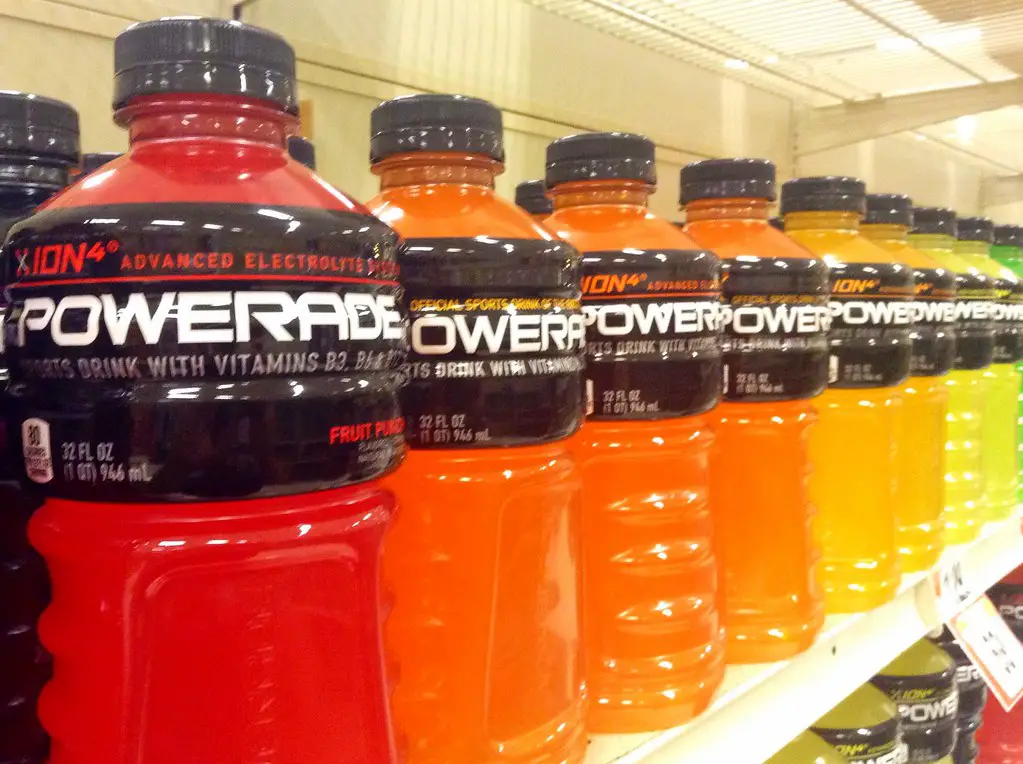
Powerade, Coca-Cola’s answer to Gatorade, has been a go-to sports drink for decades, but its dominance in the hydration market is fading. While Powerade was once seen as a necessary drink for athletes and fitness enthusiasts, consumer preferences have shifted dramatically toward healthier, lower-sugar, and more functional hydration options. Many consumers now prefer drinks with natural electrolytes, like coconut water or electrolyte-enhanced waters that avoid artificial colors and sweeteners.
Additionally, competition has never been stronger. Gatorade remains the market leader, but newer brands like BodyArmor and Liquid I.V. are gaining popularity by offering cleaner ingredients and additional benefits like vitamins and antioxidants. As sports drinks evolve to meet modern health trends, Powerade’s reliance on artificial ingredients and outdated formulas may leave it struggling to compete. If sales continue to decline, Coca-Cola may decide to pull Powerade from grocery store shelves by 2025 in favor of more innovative beverage options.
11. Eggo Waffles
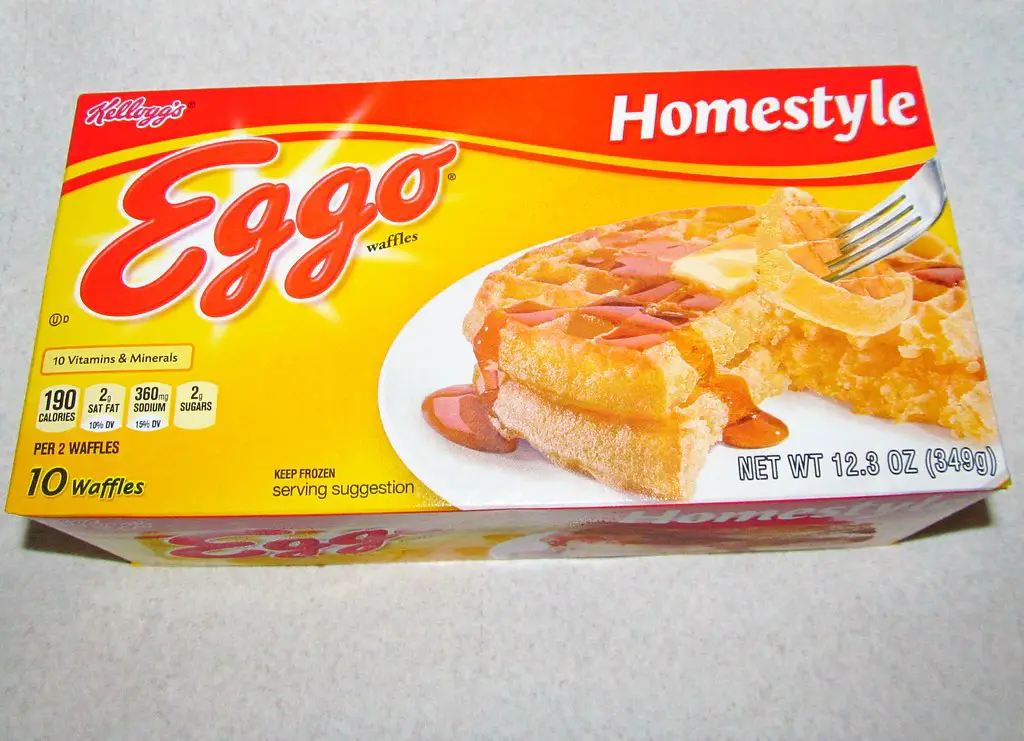
Eggo Waffles have been a breakfast favorite for decades, but their future in grocery stores is uncertain. The frozen breakfast category is shifting toward healthier, high-protein, and gluten-free options, leaving traditional brands like Eggo struggling to keep up. Many consumers are moving away from processed, sugary breakfast foods in favor of protein-rich alternatives like Greek yogurt, eggs, and homemade smoothies. The rise of keto, paleo, and plant-based diets has further reduced demand for conventional frozen waffles.
In addition, increased competition from brands offering organic and whole-grain waffles has pushed Eggo to the back of the freezer aisle. While Kellogg’s has attempted to introduce new flavors and varieties, the overall demand for traditional frozen waffles is declining. If Eggo does not adapt to changing consumer preferences, it could lose its place on grocery store shelves. By 2025, this once-iconic brand may be replaced by healthier, more innovative breakfast options that better fit modern lifestyles.
12. Nabisco Animal Crackers
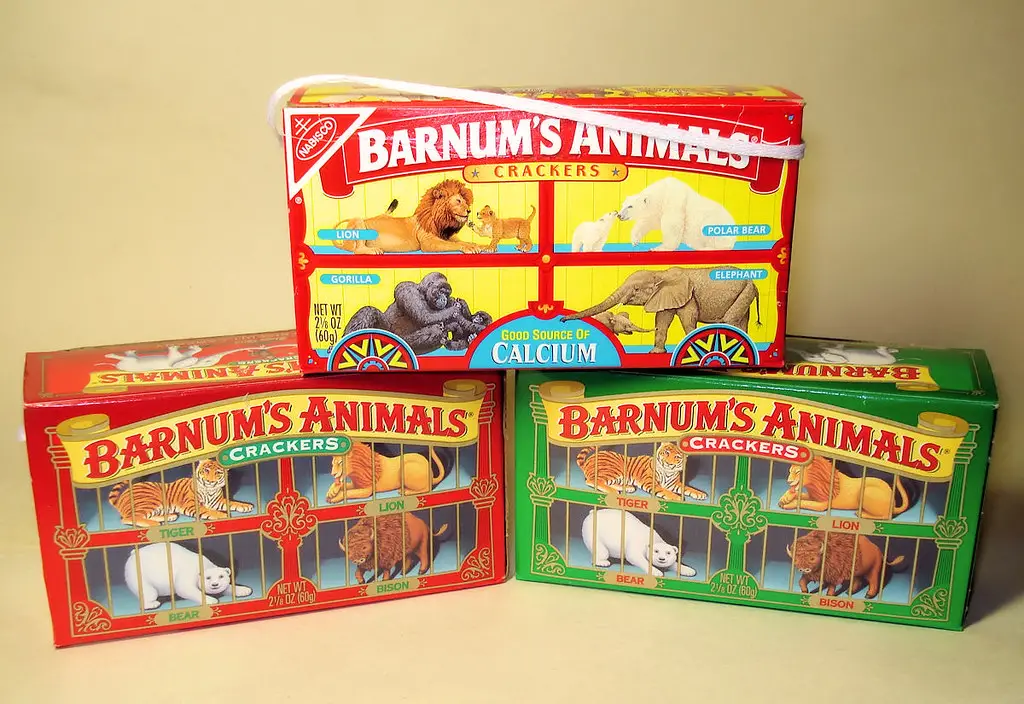
Animal Crackers have been a childhood favorite for generations, but their appeal is fading in today’s snack market. With a growing emphasis on healthy, high-protein, and low-sugar snacks, traditional sweet crackers are losing their place in grocery store aisles. Parents are increasingly choosing organic, whole-grain, or allergen-friendly snacks over classic processed options. The rise of fresh fruit, yogurt-based snacks, and high-fiber alternatives has further reduced demand for sugary treats like Animal Crackers.
Furthermore, changing packaging regulations and sustainability concerns may also contribute to the decline of this nostalgic snack. The recognizable circus-themed box has been a part of the brand’s identity, but shifting consumer preferences toward eco-friendly packaging may force changes that weaken its nostalgic appeal. If Nabisco does not find a way to modernize the product while maintaining its legacy, Animal Crackers may disappear from grocery stores by 2025, becoming another casualty of shifting food trends.
